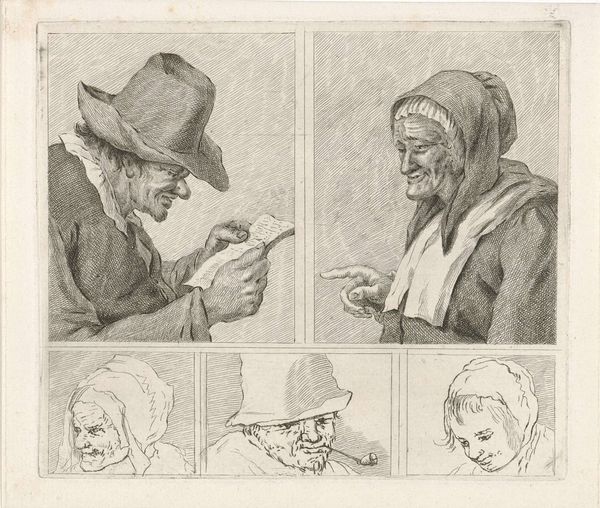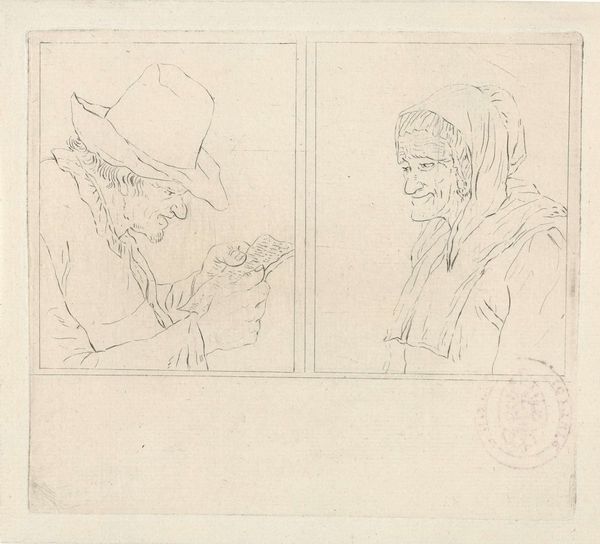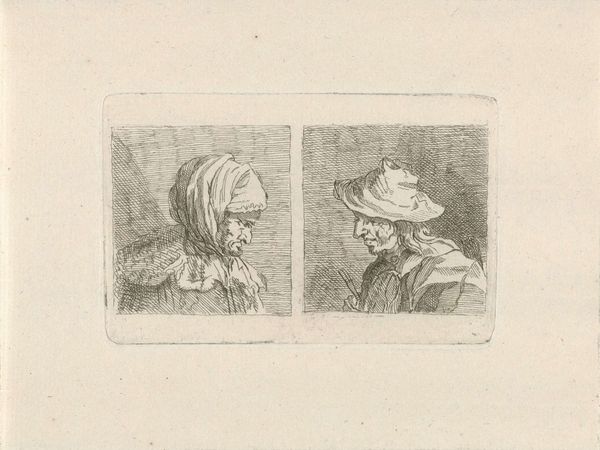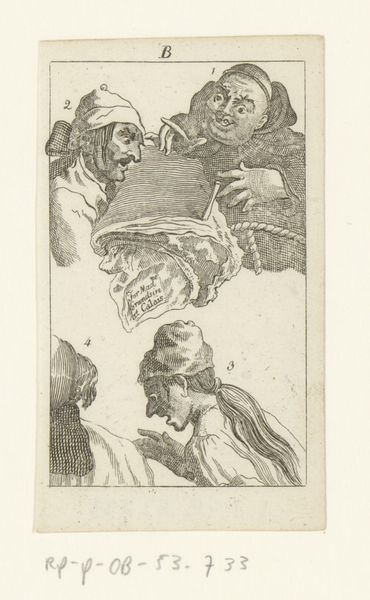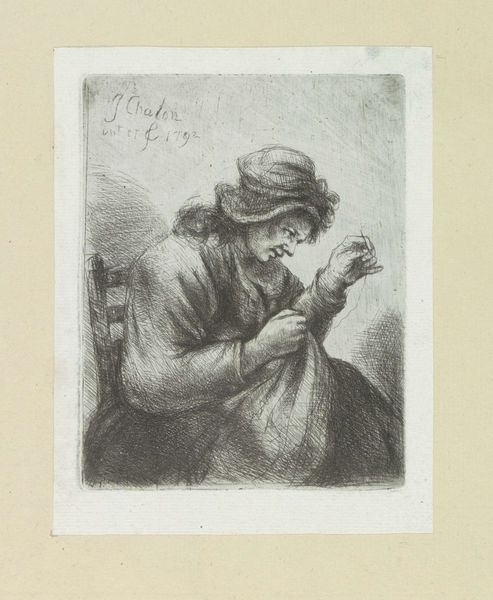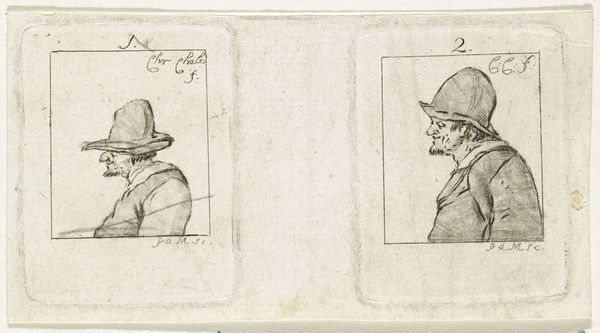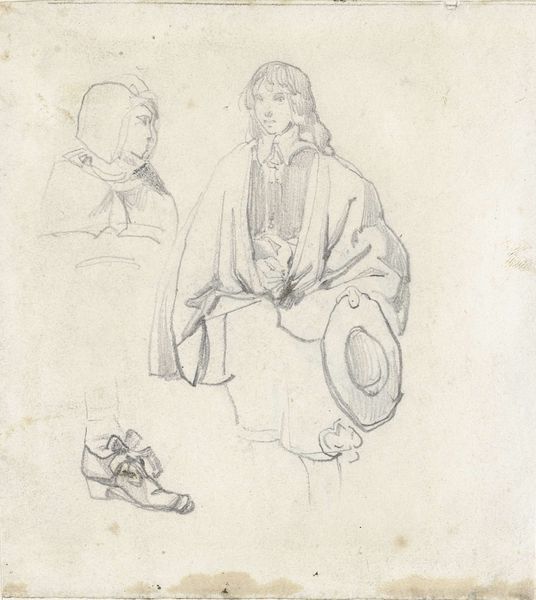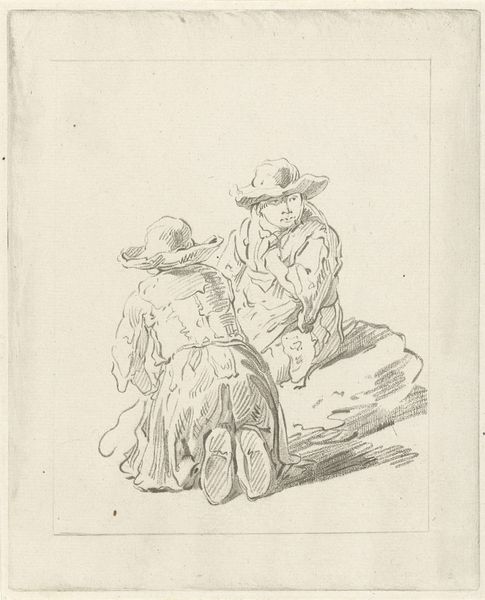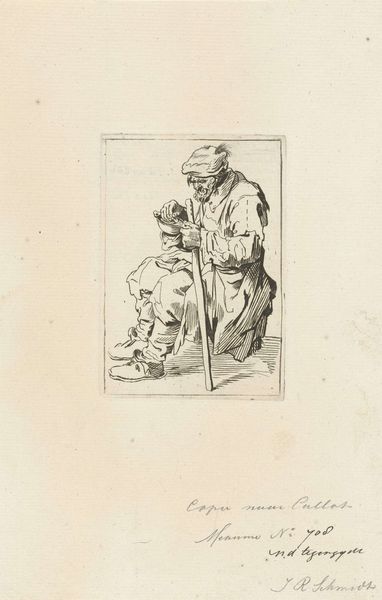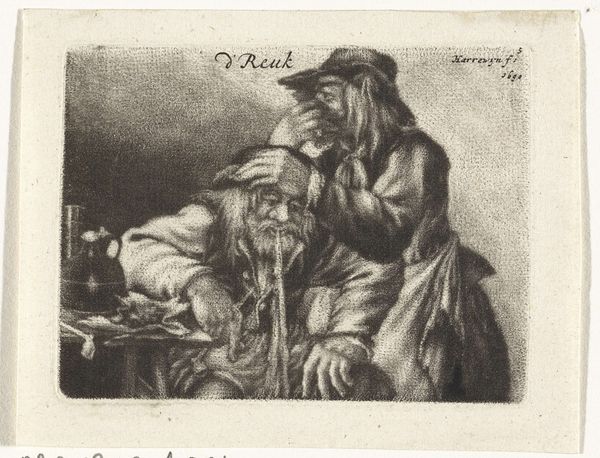
drawing, pen
#
portrait
#
pencil drawn
#
drawing
#
neoclacissism
#
pencil sketch
#
pencil drawing
#
pen
#
genre-painting
Dimensions: height 118 mm, width 141 mm
Copyright: Rijks Museum: Open Domain
Curator: Before us is a drawing from between 1768 and 1796 titled "Lezende man en oude vrouw," currently held in the Rijksmuseum. The artist behind it is Pieter de Mare, working with pen and pencil. Editor: What strikes me immediately is the stark division of the composition, those twin portrait boxes isolating the subjects in this genre-painting with all that careful, deliberate line work, almost scientific in its detachment. Curator: Yes, a dual study it is, and while rendered with objective realism, the figures tap into potent cultural archetypes. We see a man engrossed in a letter and an older woman beside him, each framed in their world and the implied stories that linger around them. Editor: Note the precision in capturing the textural contrast — the rough weave of the man’s hat versus the delicate folds of the woman’s head covering. De Mare skillfully uses hatching to sculpt form, directing our eye across these studies. Curator: Precisely. The contrast is significant. The man reads—knowledge, modernity; while the woman’s face is etched with time, memory, a life lived, almost like personifying knowledge transmitted by the oral tradition. The act of reading and lived experience – which takes precedence? Editor: An intriguing question when placed against the emerging neoclassicism in art. De Mare seems almost intent on balancing a universal message within very ordinary people. The composition directs us to think diptych, almost religious and then slams us back into Dutch genre art. Curator: Very well observed. It’s almost as if the artist is suggesting the timeless quality of the everyday – the rituals of knowledge, experience. The mirror it holds up—is that really any different today? What wisdom do we give precedence to, and why? Editor: A subtle game of seeing, framed, observed – a kind of drawing-room drama distilled into pen strokes, each person is given exactly the amount of description necessary and then...stopped. What could so easily be moralizing is simply left open. Curator: The power of art, isn't it? To present not to dictate. To capture the quiet dialogues occurring, always, within the spaces of history and humanity. Editor: A lesson, perhaps, that careful observation offers its own profundity, a world constructed from subtle variations in the density of lines, light and dark.
Comments
No comments
Be the first to comment and join the conversation on the ultimate creative platform.
